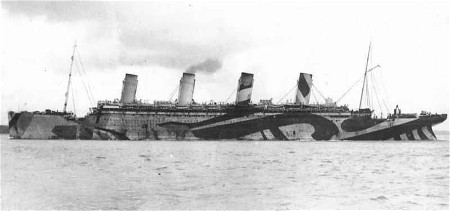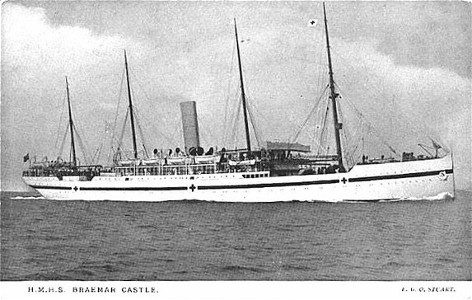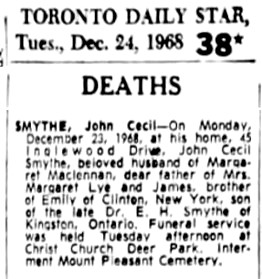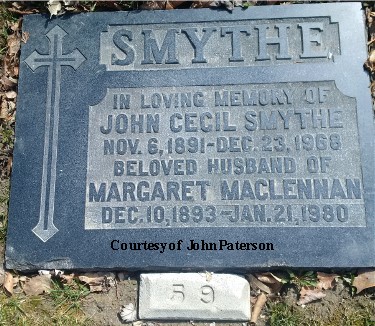|
Nov 6, 1891
|
Born in Kingston, Ontario to
Edward and Eliza (nee Wilkinson) Smythe
|
|
Feb 17, 1916
|
Officer’s Declaration on enlistment into the 59th
Battalion CEF in Brockville, Ontario
Ø Rank Lieutenant
Ø Next of kin given as George H. Smythe, brother,
59 West St., Kingston, Ontario
Ø Previous occupation given as Bank Clerk
Ø Previous military experience given as 2 years
with the Princess of Wales’ Own Rifles in Kingston and 2 years with the
Queen’s Own Rifles in Toronto
Ø Religion given as Church of England
The battalion trained in the
Kingston, Ontario area
|
|
Apr 1, 1916
|
Embarked the SS Olympic in
Halifax, Nova Scotia

|
|
Apr 11, 1916
|
Disembarked in Liverpool,
England and proceeded to the Bordon Camp
|
|
Apr 18, 1916
|
Proceeded on course to the
School of Musketry
|
|
May 6, 1916
|
Rejoined the battalion from
the musketry course
|
|
Jul 6, 1916
|
Transferred to the 39th
Reserve Battalion
|
|
Sep 26, 1916
|
Obtained 1st Class
Brigade Entry Class
|
|
Jan 4, 1917
|
Transferred to the newly
formed 6th Reserve Battalion in East Sandling.
|
|
Mar 2, 1917
|
The 6th Reserve
Battalion moved to Seaford to train reinforcements for the front
|
|
Jul 9, 1917
|
Transferred to the 21st
Battalion
On joining the battalion, he
was posted to “B” Company
|
|
Aug 15, 1917
|
During the capture of Hill 70,
near Lens, France, Lieutenant Smythe received multiple shrapnel wounds to his
back, arms and legs. He was evacuated
to a field ambulance for first aid before being transported to a casualty
clearing station
|
|
Aug 21, 1917
|
Transferred to the Liverpool
Merchants Hospital (British Red Cross Hospital) in Etaples, France
|
|
Sep 16, 1917
|
Invalided to England aboard a
Hospital Ship
On arrival in England, he was
admitted to the Brook War Hospital in Woolwich, London
Transferred to the CRO (Canadian Records Office) for pay purposes while in hospital
|
|
Nov 29, 1917
|
Discharged from hospital
Granted leave until December
16, 1917
|
|
Dec 16, 1917
|
Embarked the Hospital Ship
Braemar Castle in Liverpool

|
|
Dec 28, 1917
|
Disembarked in Saint John, New
Brunswick and proceeded to Kingston, Ontario and Taken On Strength of
Military District No. 3
|
|
Jan 31, 1918
|
Medical Board held at Kingston
recommends he be granted 4 months convalescence under medical supervision
X-Rays show multiple pieces of
shrapnel in chest, back and legs
|
|
Jun 3, 1918
|
Admitted to the Queen’s
Military Hospital in Kingston, Ontario for treatment of his shrapnel wounds
While here, surgery was
performed to remove some of the shrapnel
|
|
Aug 9, 1918
|
Transferred to the Welcome
Home Convalescent Hospital, Clinton St., Watertown, New York, USA
|
|
Oct 18, 1918
|
Transferred to the Queen’s
Military Hospital in Kingston, Ontario and Influenza was added to the
diagnosis
|
|
Nov 15, 1918
|
Transferred to the Kingston
General Hospital
|
|
Dec 29, 1918
|
The diagnosis was changed to
read Bronchitis
|
|
May 19, 1919
|
Discharged from the CEF in
Kingston, Ontario
Ø Rank on discharge Lieutenant
Ø Entitled to War
Service Badge Class “A”
Ø Proposed residence
on discharge 59 West St., Kingston, Ontario
Ø Discharged to the
care of the SCR (Soldiers Civil Re-establishment) Department
Following his discharge, the
British War Medal and Victory Medals were sent to him c/o The Canadian Bank
of Commerce, Yonge and Queen St. Branch, Toronto, Ontario
|
|
May 22, 1919
|
Discharged from hospital
|
|
Oct 6, 1921
|
Married to Margaret Helen
MacLennan in Toronto, Ontario
|
|
Dec 23, 1968
|
John Cecil Smythe died and was
buried in the Mount Pleasant Cemetery, Toronto, Ontario


|
|

